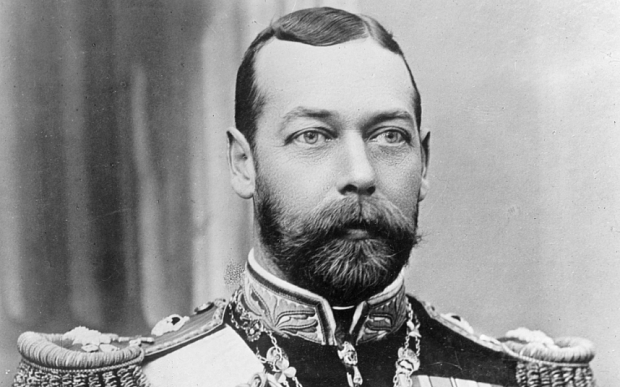Support our authors
DonateThe little spoken about Death of King George V

This post is the third post in my series of regicides and attempted regicides across the British Isles. To read part one about Edward II and the infamous red hot poker please click here, or to read about Charles I and the British civil war, please click here. Today we are going to look at the death of King George V. Although regicide is probably something of a stretch and euthanasia would be more accurate, it is a forgotten page of History and worth revisiting.
Before we delve into this it may be useful to consider the definition of regicide. If we break down the word into it’s roots we arrive at the following, “regi” is Latin for King and “cide” is French for killer. Combine the two and we arrive at King Killer. It all sounds very Game of Thrones. This simplistic definition of the word doesn’t really cut it though. We don’t usually class Richard III, who died during the Battle of Bosworth, as an incident of Regicide. Maybe that’s just because history doesn’t look kindly on the man? But there are other examples of Kings that died in battle of whom have not been given the accusatory cause of death, “regicide”, by historians looking back through the ages.
Whether King George V is an example of regicide or euthanasia, is for you to decide.
The reign of George V
George was monarch of Britain from 1910 – 1936. A reign encompassing both the incredible and the awful. During his time on the throne we had the discovery of insulin, the invention of the brasserie and the introduction of frozen food. He also reigned over one of the most bloody wars in History. World War one heard artillery firing across the world between 1914 – 1918 and saw a death toll of sixteen million people. A further twenty-one million people were wounded. The war left marks indelibly on the British psyche. It was undoubtedly a tough time to be a ruler, but George V probably did as good a job as anyone could.
King George during World War One

We are way past the time when monarchs were expected to ride into battle personally but nonetheless King George gave a pretty good account of himself. George V was a military man having served in the navy for fifteen years. He only retired from the navy when forced to due to the death of his older brother and uncle which put him in line for the throne. George was usually photographed in full admiralty uniform which is thought to have bolstered his support with the people.
He made regular visits to the front line and to hospitals where wounded soldiers resided. He would hand sign letters to wounded soldiers and generally represented a stable and reasonable nature during this upheaval of change and carnage.
In 1917 due to anti German feelings, George changed his previously Germanic surname “Saxe-Coburg-Gotha” to the more British sounding, “Windsor”, the name still in use by the royal family today.
King George V after the Great War

Following the Great War, George V drew the sadly incorrect conclusion regarding the likelihood of another world-wide conflict, “I have many times asked myself whether there can be more potent advocates of peace upon earth through the years to come than this massed multitude of silent witnesses to the desolation of war.” How could he have possibly known that just twenty-one years later the world would go through hell once again?
King George V saw the first labour parliament come into power and constitutionally supported James Macdonald as Prime Minister for the United Kingdom. Ruling during difficult times King George V seemed to understand his role and played it well.
The Death of King George V
His last words were not, as is often thought, “Bugger Bognis”, referring to the Bognor Regis area, although he is reported to have said that. His last words as he lay on his deathbed at Sandringham Estate were, “God Damn You”, said to the nurse who had administered him a sedative. Not the best last words. Physician Lord Dawson provided a more media-friendly sound bite in which he said, “The King’s life is drawing peacefully to a close”.
Physician Lord Dawson seems to have done more than that. In a series of notes released fifty years after the king’s death, it became apparent Dawson brought forward the King’s final breath. George V was injected with a lethal dose of morphine and cocaine allowing the announcement to be made, “‘in the morning papers rather than the less appropriate evening journals.”
Dawson’s notes clarify he had been advised by Queen Mary and the Prince of Wales not to allow needless prolonged suffering if there was no hope for recovery. Even so, Dawson’s notes from that fateful day are more than a little chilling.
“At about 11 o’clock it was evident that the last stage might endure for many hours, unknown to the patient but little comporting with the dignity and serenity which he so richly merited and which demanded a brief final scene. Hours of waiting just for the mechanical end when all that is really life has departed only exhausts the onlookers and keeps them so strained that they cannot avail themselves of the solace of thought, communion or prayer. I therefore decided to determine the end and injected (myself) morphia gr. 3/4 and shortly afterwards cocaine gr. 1 into the distended jugular vein…”.
The following day The Times ran the headline, “A Peaceful ending at Midnight”.
